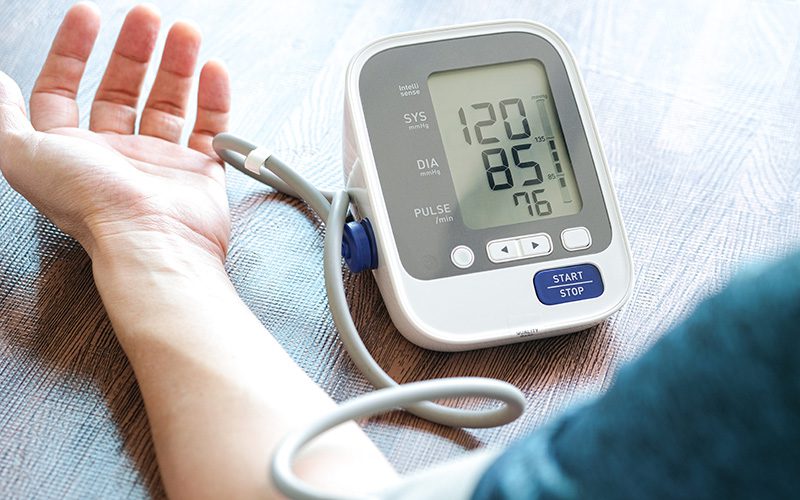By Janice Harvey, RPh, CDE
High blood pressure is common. Most people experience no symptoms, so have no idea that they have it, or it may only be high in certain situations, such as at the doctor’s office. When it isn’t controlled, it can lead to an increased risk of health problems, such as heart attack or stroke, kidney disease, heart failure, and more. Your doctor may ask you to monitor your blood pressure at home. Let’s take a look at how to choose the best monitor for you.
First, what is hypertension? What causes it?
Your heart forces blood to flow throughout your body under pressure. Hypertension, or high blood pressure, happens when the pressure in your blood vessels is too high. You can control some of the causes of high blood pressure (BP) by living a healthy lifestyle: eating a healthy diet, limiting alcohol intake, stopping smoking, and staying active. Reducing stress and maintaining a healthy weight are also important. Even so, age and genetics are common factors in the development of high blood pressure.
How do you know which BP monitor to choose?
You may already have an idea of what features you want or need. For example, you may want to be able to use and store measurements in memory for multiple family members, or perhaps you want a compact design for travel. You may need it accurately record your heart rate, even if you have an irregular heartbeat (arrhythmia), or you may need a larger cuff. If you have vision difficulties, a larger screen with easy-to-read numbers might be important. Some monitors also have Bluetooth connectivity, so you can get the results on your smart phone.
Looking beyond the features, what really matters is accuracy, because inaccurate results could lead to an incorrect diagnosis or an inappropriate change in medications. All devices use proprietary algorithms to determine BP. To be validated, they need to pass the requirements of clinical testing using a standardized protocol. They are tested in both men and women, in different age groups, in special populations (e.g., children, pregnant women, very large arm sizes), for various BP ranges, and using different cuff sizes.
Does validation really matter?
Validation ensures that devices are both accurate and precise (consistent, from one measurement to the next). A 2017 study found the proportion of devices with differences from auscultation (when your doctor takes your BP manually) of ≥ 5, 10 and 15 mmHg was 69%, 29% and 7%, respectively. A difference of 5 mmHg might not be significant, but a difference of 10 mmHg or 15 mmHg could lead to a change in the dose of your medication or even the addition of a new medication. In Canada, almost 90% of devices found in pharmacies are validated, but only about 45% of the models available for online purchase. All of the devices we carry have been validated. Our Option+ BP monitors are made for us by Thermor, which also makes the BIOS brand of BP monitors, all of which have been validated. We also carry small and extra-large cuffs that work with these devices.
Globally, there have been multiple validation protocols, but it hasn’t been easy to know that you’re buying a validated device. Hypertension Canada has made it easy by creating a program based on two levels of validation: silver and gold (more rigorous testing). You can see the logos on the outside of the box. You can also find the list of recommended devices on the Hypertension Canada website. A single international protocol has recently been developed, so you will start to see the newer logo for this program.
  |
  |
  |
Let us help you choose your BP monitor
Validation is a “quality control” measure, but it doesn’t guarantee accuracy if you don’t take the right steps when testing. We can help you determine which features your need, ensure that the cuff fits you properly, and review how to use your new device. When you’re making an investment in your health, it’s worth the time to sit down with us to ensure the best results.
